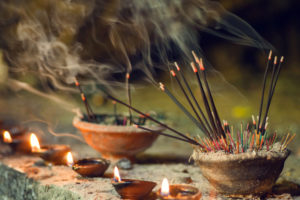
Followers of Buddhism make up less than 1 percent of modern India’s population. While this belief system spread throughout Asia first and then to the rest of the world through migration and cultural exchange, rivalry from other creeds and conquests by foreign powers eventually reduced its influence. At the same time, this philosophical system has shaped significant portions of the subcontinent’s history and culture, forever leaving aftereffects that can still be seen in India today.
A Prince Seeks the Meaning of Life
Most scholars posit that the Buddha was born in what is now modern-day Nepal sometime between the sixth and fourth centuries B.C.E. BBC Religions retells the traditional tale of this prince renouncing his royally privileged life after encountering an elderly man, an ill man, and a corpse for the first time. The disturbed royal initially pursued an aesthetic life until he concluded that the best path was a “Middle Way” in which one seeks neither wealth nor poverty. While meditating under the legendary Bodhi Tree, Gautama is said to have discovered a path to enlightenment that focused on reducing one’s own suffering and that of other beings. Upon receiving these realizations, he became known as the Buddha.
An Emperor Rejects War and Embraces Faith
Tradition holds that the Buddha traveled extensively throughout Asia and shared his teachings. The Berzin Archives explain that devoted monks and merchants later passed on his philosophies to anyone who wanted to learn, be they commoners or nobles. Yet it would be a conquering Mauryan emperor who would ironically contribute to its growth throughout India.
Ashoka the Great is primarily known for two reasons: his violent invasion of the southeastern coastal region of Kalinga and the establishment of Buddhism’s popularity in the subcontinent. According to the Ancient History Encyclopedia, the emperor issued an edit communicating his regret for the bloodshed in Kalinga and assuring listeners that he would “embrace the propagation of dharma.” Scholars debate whether he explicitly meant Buddha’s teachings or simply referred to morals and religious tolerance, but Buddhist traditions credit him with several key cultural and religious outcomes in the region:
- Supporting the development and maintenance of monastic Buddhist communities
- Aiding in the organization of the Third Buddhist Council
- Encouraging missionary activities throughout Asia and as far west as Egypt
- Promoting religious tolerance and the acceptance of Buddhist philosophies
Buddhism’s Legacy in Modern India
While many other dynasties would rule India after Ashoka’s death in 232 B.C.E., the Ancient History Encyclopedia discloses that Gupta rulers played a large part in helping Buddhism flourish by promoting tolerance for its ideas and financially supporting monasteries. However, competition from other belief systems, fragmentation of the region into smaller kingdoms, and occupation by other empires brought an end to its popularity.
Even so, evidence of its mark on the area’s history and culture remain today. The famous Mahabodhi Temple, a UNESCO World Heritage Site located in Bihar, is where Buddha is believed to have found enlightenment. A descendant of the original Bodhi Tree is said to grow on the temple grounds today. Other Buddhist sites still stand throughout the land, and several artworks depicting the Buddha’s life and bodhisattva figures have been found and now reside in the country’s National Museum. Even one of India’s most popular actors, Amitabh Bachchan, is said to have been named after Amitabha, one of the celestial buddhas revered in Mahayana traditions.
Its Marks in India and Beyond
Arguably, Indian history may have taken different paths without the existence of Siddhartha Gautama’s teachings and Ashoka’s efforts to spread them. Other belief systems would gain prominence as the political landscape shifted. However, the world still has India to thank for this expansive collection of philosophies followed by nearly 500 million adherents today.

